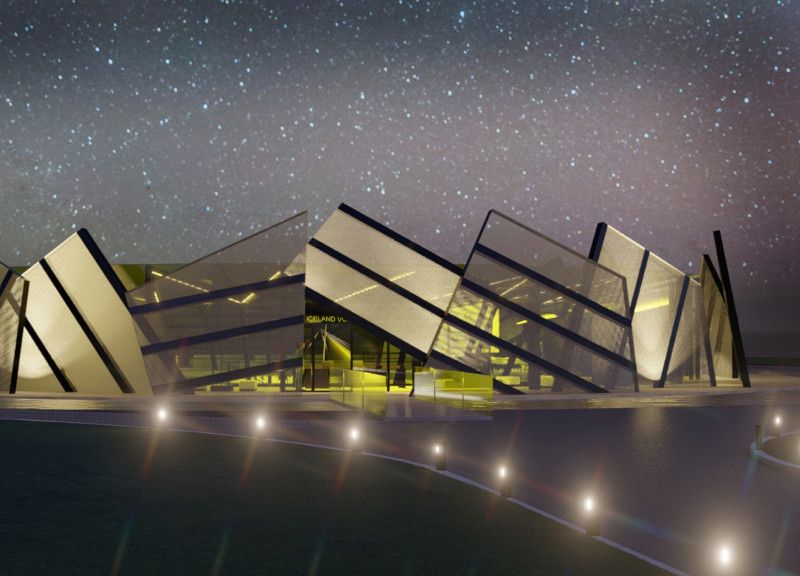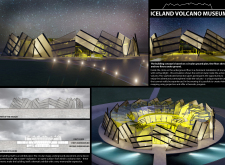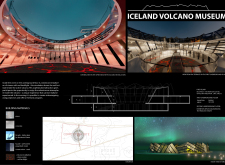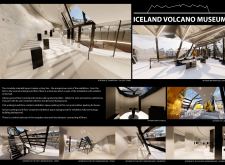5 key facts about this project
The Iceland Volcano Museum is located in a region known for its volcanic activity. It serves as both an educational facility and a visitor attraction, inviting people to learn about the natural forces that shape the landscape. The design features a circular layout that reflects the forms of volcanoes, connecting the building to the surrounding environment while creating an engaging space for exploration.
Design Concept
The museum is structured across three levels: one above ground and two below. This arrangement allows for a logical progression as visitors move through the exhibits. The first floor includes essential services such as a reception area, offices, a café, and meeting rooms. These spaces are designed to facilitate visitor flow while providing necessary amenities.
Exhibition Spaces
The first underground level is dedicated to exhibitions, featuring a multipurpose hall for a variety of displays. This flexible space is suitable for both permanent installations and temporary exhibits, ensuring that the educational offerings can evolve over time. The museum also provides parking for 100 vehicles along with access for buses, enhancing its usability for large groups.
Immersive Experience
A unique aspect of the museum is an installation that simulates the environment of an active volcano. This feature includes stones illuminated with red lighting, evoking the look of molten lava. This immersive element adds depth to the visitor experience. The museum also plans to use video mapping in the evenings to create a dynamic visual atmosphere, making it an engaging place to visit.
Materials and Aesthetics
Materials chosen for the design include stone and concrete, which create a strong connection to the geological themes exhibited. A triple-glass façade in an aluminum frame allows natural light to enter while ensuring energy efficiency. The exterior also incorporates perforated expanded metal, which serves both aesthetic and functional purposes by providing ventilation.
The design culminates in a façade that reflects the volcanic landscape of Iceland. It combines both practical and visual elements, contributing to a thoughtful approach in creating an educational space that encourages visitors to connect with the natural world.





















































